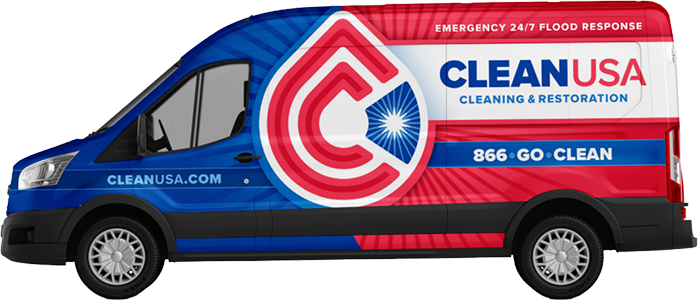Untreated water damage can cost over $3,291 for cleanup alone. The health risks of water damage far outweigh these costs. It can cause mild irritations to severe illnesses. Knowing about the effects of water damage is key for everyone involved.
Water damage can affect a building’s structure fast. It also creates a perfect place for molds and bacteria. These harmful things can grow in as little as 24 to 48 hours. They find their way around through the air. This affects the air you breathe, possibly leading to breathing issues, infections, and more.
There’s also the risk of getting hurt from electric shocks or fires, especially in businesses. Damp spots attract pests like bugs and rodents. They can introduce new diseases, making the water damage and health risks even worse. Finding and fixing water damage early is critical to avoid these dangers and keep your place safe.
Key Takeaways
- Untreated water damage can quickly escalate, leading to significant health and structural costs.
- Mold and bacteria can develop within 24 to 48 hours, affecting air quality and causing respiratory issues.
- Water damage introduces risks of electrocution and fire hazards in properties.
- Moist environments attract pests that can carry diseases and heighten health risks.
- Early detection and professional remediation are crucial to mitigate health concerns and maintain property integrity.
Common Causes of Water Damage
Learning about water damage causes is crucial for avoiding big losses in buildings. Leaking pipes and natural disasters are just a few examples. They bring their own set of challenges. Now, let’s look at some common water damage sources.
Broken Pipes
Broken pipes can cause a lot of water damage. They might break from old age, rust, or freezing. When they do, the repair costs can be high. You could face big water bills and damage to your home or office.
Leaking Roofs
Places with lots of rain or old roofs are at risk of roof leaks. If not fixed fast, this damage can spread indoors. It can ruin walls, furniture, and the building’s structure. Taking quick action is crucial.
Condensation
Badly ventilated places often suffer from condensation damage. This can cause mold, which is bad for the air and your health. Air conditioners and faulty drainage are often to blame. Fixing these issues quickly can prevent long-lasting problems.
Sewage Backups
Sewage damage is not just gross; it’s also dangerous. It can happen when sewers back up or break. Acting fast is important to stop it from spreading. This helps avoid more damage and keeps your place safe.
Worn Appliances
Appliances like dishwashers can start leaking as they get old. These leaks can cause a lot of water damage. They can also grow mold and harm your building’s structure. Checking appliances regularly can prevent these problems.
Natural Disasters
Events like hurricanes and floods can severely damage buildings. Even small floods are costly to fix. Such events show why it’s important to prepare and prevent possible damage.
Reacting quickly to water damage can save you a lot of trouble and money. Catching issues early and getting professional help is important. It’s the best way to fix water damage and protect your property.
Mold and Bacterial Growth
Mold and bacterial growth often start 1-5 days after water damage. Indoor places are at risk because spores are everywhere there. Mold spores like warm, moist spots. This poses big health and property dangers.
Types of Mold
There are many types of indoor mold. Examples include Cladosporium, Aspergillus, and Penicillium. Mold loves wet items like paper, wood, and fabric. Black mold and aspergillus are worry because they grow fast and are bad for health.
Health Impacts of Mold
Mold can cause minor to serious health problems. It can bring allergies, asthma, and serious conditions like aspergillosis. Short-term symptoms can be skin or eye issues, sneezing, and a runny nose. Long-term, it can lead to major breathing problems.
People with weak immune systems are more at risk. Research shows mold can be toxic. It can damage the lungs, brain, immune system, and even cancer.
Preventive Measures
To stop mold, keep indoor humidity below 60%. Use dehumidifiers and ensure good air flow. Fixing leaks quickly is also important. Clean with mold-killing products, especially in bathrooms. For big mold problems, get professional help.
The CDC suggests wearing an N-95 mask when cleaning mold. This keeps you from breathing in spores. Preventing it means managing moisture and improving air flow in your home.
Poor Air Quality
Indoor air quality becomes a big worry after water damage. Mold and bacteria go in the air through vents, spreading everywhere inside. This lowers air quality a lot and can make people sick.
Impact on Respiratory Health
Mold really hurts our ability to breathe, especially for babies, seniors, and those with lung conditions. Areas like the Twin Cities suffer a lot from issues like asthma. Here, people need to go to the hospital for asthma more than in other parts of Minnesota.
This means we need to act fast to help those in danger from bad air quality.
Allergens and Irritants
Places with water damage get more allergens in the air, like mold, pollen, and pet hair. This can make asthma worse and cause problems like a stuffy nose or coughing. There’s also stuff like VOCs, which are bad chemicals, making the air even worse.
We must quickly do something to make the air better in these places.
Pest Infestations
Water damage sets a perfect scene for pests, attracting many kinds of harmful bugs and animals. Cockroaches, silverfish, ants, and termites love damp places. Besides being a health risk, they cause big damages to structures.
Mice and rats find the moisture inviting, starting a major pest problem. They spread diseases through their waste and can harm your home by chewing on it. One such disease is Hantavirus, which is deadly if not treated.
Insects like cockroaches worsen breathing problems and might startle kids into asthma. Fleas, ticks, and termites are also drawn to damaged homes. They can spread serious illnesses and destroy your house further.
Besides the health and safety issues, these pests can increase your home’s repair costs if not managed. Cleaning well, sealing gaps, draining stagnant water, and getting pest control help can prevent this. Regular maintenance and sanitation play a key role in keeping these dangers away.
What are the health risks of water damage?
Being around water damage a lot can really hurt your health. It can lead to breathing problems and other serious sickness. We’ll talk about how it’s bad for your health and why it’s so important to fix water damage quickly.
Asthma Symptoms
Water damage is a big deal for people with asthma. Mold grows where it’s damp, making asthma worse. Breathing in mold and bacteria can start asthma attacks. It can also make symptoms happen more often and make them more serious.
Chronic Cough
A common problem from water damage is a cough that won’t go away. If you don’t fix the water damage, mold can grow in just a few days. This makes the air bad to breathe and can cause more coughing.
Wheezing
Wet places often lead to wheezing. Too much moisture is perfect for mold and bacteria. They bother your breathing, making you wheeze and feel like your throat is sore. People with lung problems feel this even more.
Severe Respiratory Disorders
Living in a place with water damage can cause big breathing problems. Breathing in mold for a long time can lead to diseases like bronchitis. People with weak immune systems or past breathing problems are at the most risk.
Electrical Hazards
If your home gets flooded, be careful with electricity. Water makes it easy for electricity to flow, which can be very dangerous. It can cause shocks and start fires. So, it’s key to deal with electrical safety flood concerns quickly to stay safe.
Risk of Electrocution
After a flood, there’s a big electrocution risk with wet electrical systems. If you see water near outlets or lights, turn off the power at the main switch. Also, unplug any wet devices and move those you can away. Getting an expert to check your home’s wiring is very important.
Hiring a professional electrician for repairs is the best choice. They can work safely. They also make sure your place is checked often to keep things working right.
Fire Hazards
Water damage fire hazard risks are serious because of short circuits and overheating. After flooding, have all portable devices checked before use. If the water was clean and damage is minor, drying out the cables and replacing parts may be enough.
But, major water damage might need rewiring. Also, install electrical equipment higher to avoid flood damage in the future. In bad cases, like a big fire risk, the fire department might help protect you and your property.
Always make sure electrical devices are safely grounded. This prevents deadly shocks. Employers should train their workers to spot and avoid risky electrical situations. This is crucial to prevent electrical hazard water damage.
To lower the risk of short circuit fire risk, follow OSHA rules. Always be careful about safety before and after a flood. This is the best way to lower the dangers linked to flood damage.
Conclusion
Swiftly addressing water damage is key to preventing health risks and damage to your property. Dealing with it right away and restoring what is damaged can help reduce the danger from various water types. For instance, clean water from taps or burst pipes, though less risky, can cause serious health problems if not quickly tackled.
Appliances leaking and small toilet overflows create gray water damage. This type requires fast cleaning to get rid of bacteria. If the water is black, like from sewage, then professionals should handle it. Blackwater poses significant health threats.
It’s vital to understand the risk of mold and bacteria in flooded areas. Mold spores can harm the respiratory system. Plus, excessive moisture supports mold growth that can irritate the skin. It’s necessary to check electrical systems to avoid accidents.
Controlling pests in damp places is also important after water damage. Insects and rodents can spread diseases and harm your property. Knowing the symptoms of water damage exposure is crucial. This can range from breathing issues to skin problems.
Staying proactive helps protect your well-being and your home. By understanding the risks and taking quick action, you can keep your family safe. This includes both addressing the immediate issue and handling its aftermath.




